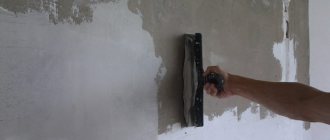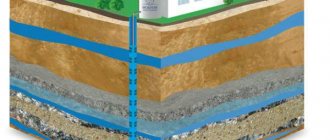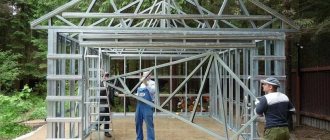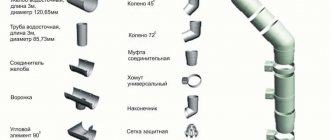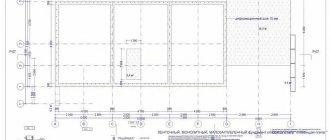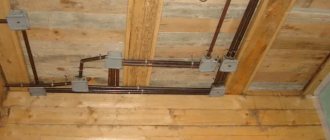Every tool needs timely maintenance, and a rotary hammer requires this first and foremost. After all, the operation of this tool is accompanied by a huge number of reciprocating rotations and movements, and the volume of dust released from the work object is highly concentrated. Under these operating conditions, careful care of the device and timely replacement of the lubricant in the hammer drill gearbox are required.
Most users are confident that if lubricant is present, they can work with it for an indefinite amount of time. This opinion usually exists among users due to a poor level of knowledge of the laws of physics, so we will tell you in more detail about the mechanism of operation of the lubricant.
Electrical faults
Serious problems can also be caused by malfunctions associated with the electrical part of the hammer drill.
By the way, a failure to operate can be caused by a trivial lack of voltage in the outlet. By and large, if an instrument does not show any signs of life, the likelihood is that it is the electrical part of the instrument that has failed. The main electrical defects include the following:
No voltage in the supply network, cable break
You can connect any electrical device to check. If there is voltage in the network, then it is necessary to check the integrity of the cable.
Connecting wires
To identify this defect, inspect it, then, using a tester, ring it. To eliminate a cable break, you can either solder it or twist it. But it's best to replace it.
Start button malfunction
The cause of this defect may be simple oxidation of the contacts in the button. To check this assumption, it is necessary to dismantle the rear cover of the casing. If there are no visible signs of oxidation, it is advisable to use a tester. To correct this problem, you can clean the contacts, but it is better to replace the power button.
Erasing brushes
With prolonged and intensive use of a hammer drill, wear occurs on the brushes through which electric current flows to the motor. When worn too much, they begin to spark and a burning smell appears. The brush must be at least 8 mm long.
https://youtube.com/watch?v=D0hgvy9xEGg
Once this and a smaller size are reached, they are replaced. The replacement procedure is quite simple and anyone can handle it, even if they are not familiar with the basics of electrical engineering.
Speed controller failure
If this problem is detected, it is advisable to replace the entire assembly. But, in fairness, it should be noted that this defect does not occur often.
Motor malfunction
This is probably the worst defect that can happen to an electric tool. The user must understand that it is better not to repair the engine independently. For this purpose, there are specialized workshops equipped with all the necessary repair and diagnostic equipment.
When the engine is running, a certain layer of carbon deposits forms on the manifold. You can remove it yourself and then try to turn it on. If this operation does not help, then it is necessary to ring the armature and stator. There are certain requirements for winding resistance.
Stator repair
Repair of these components can only be carried out in an electrical workshop. It is permissible to perform this work at home, but only if you have special equipment and certain knowledge regarding the operation of the electric motor. This operation, performed at home, will significantly reduce the cost of repairing the rotary hammer as a whole.
Perforator device
The main element of the hammer drill is the engine, which consists of an armature and brushes.
Engine control device. Start and stop button. Interference suppression elements (capacitor, chokes); Power cord.
In some models, the switch is combined with a control device.
Auxiliary mechanisms
Some models may be equipped with additional parts:
- mode switch;
- vacuum cleaner;
- depth limit;
- other.
Electrical faults and their elimination
- The device does not turn on for the following reasons:
- Broken cord (usually near the handle). The cord should be replaced or shortened, cleaned, carefully threaded into the rubber shock absorber seal on the handle and soldered in the appropriate places.
- Poor contact in the switch (eg oxidation).
- Breakage (combustion) of extinguishing elements. They should be replaced. For a while (if there are no such elements), you can connect the engine “directly” to the control unit. Please note - this method can lead to rapid wear of the motor.
- Combustion of the UUD itself. Replace with a new one.
- Winding breakage or burnout. You need to take it to a workshop or a friend to rewind it.
Tip: Check for broken cord or windings, non-contact of switch and combustion of extinguishing elements with a tester.
- Sparks are visible inside the housing. They are called:
- Poor fit of the brushes to the armature due to wear. It is necessary to change the brushes or sharpen them with a file (fine “sandpaper”).
- Oxidation of the anchor. To be cleaned with a student's eraser or alcohol.
- The speed does not change due to a malfunction of the control unit. It needs to be replaced, but you can get by with it for a while.
- Smoke comes from faulty windings, brushes or other elements. For example, due to “sticking” of the motor, the windings begin to heat up and smoke. Visual inspection required
- A short circuit in the cord (insulation breakdown) or switch can cause the plugs to be knocked out.
Replacing and repairing a cartridge
Failures of the SDS chuck are usually expressed either in the inability to insert the drill shank, or in its flight during operation. The locking mechanism is ridiculously simple and most breakdowns can be fixed literally “on your knees”.
To disassemble the cartridge, you need to pick up and remove the rubber boot in the front part. Having pulled the glass towards you, as when inserting a drill, you should remove the locking ring from the barrel fitting and remove the crimp coupling along with the spring. Don't forget to carefully remove two small balls from the grooves.
The conical inside of the sleeve presses the balls into the slots when the drill is to be locked and allows them to move freely when the sleeve is pulled back. As a rule, the reason for spontaneous flight of the drill is grinding of the balls or the inner surface of the sleeve. Replacement parts can be assembled with a new cartridge; the balls for SDS-Plus have a diameter of 6.9 mm and can be removed from a regular bearing.
Jamming and the inability to insert the drill can also be a result of grinding parts, but this is often caused by coking of the cartridge with dried lubricant or foreign objects getting inside. In any case, further operation of the tool in this condition leads to breaking of the seating grooves already on the drill shanks, and the problems described above may continue to occur even with a fully functional chuck. The cause of most breakdowns is immediately visible during disassembly and cleaning.
Other components of the tool
as additional components and devices that make work as convenient, easy and efficient as possible :
- anti-vibration device;
- work depth limiter;
- dust removal agents.
Manufacturers of rotary hammers are developing new and modern anti-vibration systems, which can be either active or passive. The active type of AVS systems is installed exclusively on the most powerful models.
Damping or reducing vibration during operation of the tool is carried out by a shock-absorbing device, a counterweight with a spring. The passive system is represented by ordinary rubber pads on the body . The safety clutch protects the electric motor during instantaneous stopping and prevents burnout and overheating at increased current values.
Troubleshooting
As noted, some problems can be identified immediately. The main thing is to understand in which part of the hammer drill the problem has arisen.
If you understand that the problem is in the electrical part, then be careful. Make sure that the hammer drill is de-energized, otherwise repairing such a tool is dangerous not only for it, but also for your health.
When the hammer refuses to turn on, the failure is electrical and you should check to see if the wires are broken. In this case, first determine where exactly the wire is broken, then replace it or shorten it at the break point.
If you load the hammer too much, the damping mechanism may burn out. Then you will have to replace all burnt parts.
If something sparkles inside, then most likely the problem is in the brushes. They either do not fit tightly to the anchor, or moisture got there and they began to oxidize. Then the best solution would be to replace them.
If water has already gotten onto the anchor, then you will have to carefully dry everything, but so as not to also spoil the winding. To do this, use a cotton swab and alcohol.
An additional sign of problems with brushes is the appearance of smoke. This means that these devices have worn out and the wires are in contact with the armature. In this case, the brushes should be replaced with new ones.
In addition, smoke may mean that there is a malfunction in the motor - it seizes, heats up, and this causes smoke. Faults in the mechanical part are in most cases determined by ear. Noise and grinding are the main signs of a problem in this part of the hammer drill. Fixing problems here is much easier and safer for your health.
The most common sign that a problem has occurred is a decrease in productivity. Often, it is because of a broken switch that the hammer drill stops hammering. It is worth replacing the power button for further work.
Another possible reason for deterioration in the level of performance may be contamination of the device. To fix the problem, you need to clean and lubricate the device.
In addition, problems often arise with the impact mechanism itself. But to determine the exact cause, it is necessary to examine the entire part, since the problem could be either in the drill or in the small iron ball inside the chuck. Therefore, to repair the impact mechanism, you should look for the cause in the entire mechanical part of the device.
Recommendations for using a rotary hammer
As you can see, repairing a rotary hammer with your own hands is a task that anyone can handle; the main thing is to understand the structure of this useful tool for household use and follow the instructions. And to reduce the likelihood of a breakdown to a minimum, you need to follow some rules:
- Before you start working with the tool, inspect it for chips or cracks in the body. If they are found, carry out repairs.
- Read the instructions and technical data sheet of the product and follow all recommendations for working with it.
- Use high-quality drill bits that are suitable for the specific type of material.
- If the amount of work that needs to be done is large, then it is necessary to take breaks to avoid overheating.
- After working with the tool, clean its surface from dirt and dust; you can also use a vacuum cleaner to blow it out.
- Observe storage conditions. The hammer drill must be located in a special place where moisture does not penetrate, as it can damage electrical parts.
- Carry out a complete disassembly, cleaning and lubrication of the tool on a regular basis once or twice a year.
By the way, the absence or lack of lubrication is a fairly common cause of hammer drill failure. The instructions for the device should indicate which places and parts need to be lubricated and which not.
It is important to know that for gearboxes liquid lubricant must be used, which must be poured into a hole specially designed for this; for other parts, a thicker lubricant can be used
By following these simple rules, the tool will serve for a long time, and the risk of malfunctions will be minimized. But if any malfunction does appear, then, following the recommendations above, you can eliminate it without difficulty.
Which manufacturers produce gear lubricant?
General purpose brands such as Castrol, Xado, Ravenol, Shell, etc. Of course, these products do not have approval from the hammer drill manufacturer. But the description must contain information that this is a lubricant for a power tool gearbox. All you have to do is choose the right consistency. Information about this is in the technical documentation of the tool.
- Specialized brands: Bosch, Makita, Lubcon, AEG. This is a better choice, but you should be more careful when purchasing. The documentation for the lubricant may contain a list of specific models of the hammer drill manufacturer. Compatibility with tools from different brands is determined by consistency and similar characteristics.
- An interesting product: semi-liquid lubricant for gearboxes “ULTRA”. This is a compromise between consistency and liquid oils.
The lubricant easily turns into a liquid state with slight heating, and at the same time has excellent adhesion. Therefore, this product can be used in both crankcase and non-sealed gearboxes.
Possible malfunctions, causes of their occurrence and solutions
To repair a rotary hammer with your own hands, you must first determine the external manifestations of malfunctions.
The hammer drill does not hit
If the hammer stops hitting when switching to impact mode, but the drill rotates, it is most likely that the floating bearing is damaged. The solution to the problem is to replace it with a new one.
The second possible reason is a malfunction of the striking mechanism. Often, when overloaded in work, the steel striker splits, this leads first to a weakening of the impact, and then to its complete absence. The firing pin needs to be replaced.
The third probable reason is wear or breakage of the piston group of the hammer drill. The liner and piston should be replaced.
The hammer drill does not spin and does not drill
If the chuck does not rotate when you press the start button in drilling mode, the cause can first be determined by the sound. If the electric motor hums but does not turn the chuck, most likely something is preventing the rotor from rotating inside the gearbox. What happened to the engine will have to be found out by disassembling the mechanical part of the tool.
If the engine does not hum when turned on, it is more likely that the motor has failed. Having opened the lid of the device, it is necessary to determine what exactly led to this phenomenon. This could be an open circuit, a broken start button, or a short circuit in the coil windings. Using the tester, the specific cause is determined and appropriate repairs are made.
The drill does not stay in the chuck and flies out
Incontinence of the hammer drill equipment can occur during long-term use. The drill or chisel inserted into the chuck does not hold and flies out during operation. It is not only impossible to continue chiseling with such a tool, it is also very dangerous - a flying chisel can cause injury.
The reason for equipment incontinence lies in wear or breakage of the cartridge. The cartridge needs to be disassembled and determined what the problem is. Perhaps the balls have become deformed, wear has appeared on the restrictor ring, or the retaining spring has sagged. Usually, after replacing the damaged part, the cartridge begins to function normally again.
Video: why drills fly out of a hammer drill
The brushes sparkle
Sparking brushes is a fairly common phenomenon when working with tools in dusty conditions. As a rule, sparking is a consequence of the deterioration of the material of the brushes themselves. Replacing the latter with new ones will help correct the situation; sparks will no longer fly out.
If not, the reason must be sought in the stator or rotor windings. It is possible that the large amount of dust entering the motor has caused the protective varnish covering the copper conductors to wear away. And this entails a short circuit. The presence of an interturn short circuit is checked using electrical instruments (multimeter).
The resistance between the lamellas is measured with a multimeter
In addition, it should be taken into account that dust may adhere to the lubricant of the bearing located next to the commutator. To prevent this, the collector is degreased using a swab soaked in alcohol or solvent.
The hammer drill gets very hot
If the hammer drill gets excessively hot during operation, this is a clear sign of a malfunction of the electric motor. First of all, to prevent overheating, you must observe the operating mode of the device:
- take breaks at certain intervals;
- After loading, give the tool the opportunity to idle.
When drilling, it is recommended to use a periodic mode: apply maximum power for no more than 1 minute, then turn on idle for 3-4 seconds.
If the housing temperature does not decrease, then you need to inspect the electric motor. If you notice a characteristic odor coming from under the tool casing, you must immediately stop working and disconnect the device from the network. You can disassemble it only after it has completely cooled down.
The hammer drill does not hold the chuck
Sometimes there is a situation when the cartridge flies off along with the equipment while the hammer drill is running. This occurs due to wear of the chuck body mount at the end of the raster sleeve, which is a retaining ring. If it breaks, the fixation is broken and during the push the rubber boot flies off, followed by the spring and balls.
You can restore normal operation of the cartridge by installing a new locking ring. This is done quickly and does not require any additional equipment other than a regular screwdriver.
Mechanical breakdowns
When repairing an electric hammer drill, there is often a need to disassemble it. But before you start, you need to make sure once again that the problems arose in the mechanical part of the device. We will analyze in detail what problems occur and how they can be eliminated.
Malfunctions in the gearbox
Untimely maintenance, poorly performed repairs, or operating a hammer drill in extreme conditions can lead to the failure of any part that is part of this mechanism. To identify defects in the gearbox, it is necessary to disassemble it, wash the parts and then perform a thorough inspection of them.
Replacing the gearbox
Identified damaged parts must be replaced with new ones. Then assemble the gearbox; of course, you need to put lubricant in it. By the way, the brand of lubricant should be indicated in the instruction manual.
Chuck malfunction
If the nozzle does not enter the working position, then most likely the reason lies in the cartridge. To eliminate this defect there is no need to disassemble the instrument. As a rule, obstacles to installing the nozzle are due to the fact that some debris has gotten inside the cartridge.
The mode switch is faulty
To identify malfunctions in the mode switching device, the hammer drill will still have to be disassembled. In principle, the defect can be identified by carefully inspecting the switching mechanism.
Mode switch repair
In principle, the main components in which breakdowns most often occur and require repair are listed. Meanwhile, there are several other types of defects that can arise for various reasons. For example, there is no impact hammer mode. That is, the drill rotates together with the chuck, but does not have an impact effect on the working surface. The most common cause in this case is a floating bearing. Another cause of this malfunction may be damage to the steel striker. In both cases, replacement of the defective part is required.
There are often cases when when you turn on the tool, the engine runs, but the chuck does not rotate. This happens most often because the gearbox is jammed. By the way, keeping the hammer on for a long time is unacceptable when the chuck is not working, as the motor winding may burn out. The hammer drill will have to be disassembled and defects in the gearbox eliminated. They can be caused either by damage to the gears or by debris getting into it.
Another defect is that the chuck cannot lock the drill. This problem can occur with a tool that has been in use for a long time. The cause of this problem lies in the wear of the fastener housing.
Do-it-yourself prevention and repair of a rotary hammer
Rotary hammer "Elektromash P-1150", period of intensive use - 5 years. During this time, the hammer drill was never serviced or repaired. The operating modes are constantly covered in dust, so at a minimum, maintenance of the hammer drill was mandatory, at least to replace the lubricant. Which is what we will do with our own hands.
Symptoms of malfunctions:
- The start key does not work periodically.
- Increased noise when operating in rotation mode.
- Missing hits in the “impact rotation” mode.
Electrical part
Let's go in order. First, let's fix the problem with the start key. And we start repairing the rotary hammer with our own hands from the simplest. We disassemble the hammer drill handle, check the power cable and the start button. We test the cable with a tester, bending it during testing. This is how a break in the supply core inside the insulation is detected. The cable in this case turned out to be fine.
We disassemble the switch, inspect and clean the burnt contacts. The reason was in them, the key malfunction was eliminated.
Since the power tool is already disassembled, then maintenance of the hammer drill will not be superfluous. Therefore, we check the condition of the brushes and the contact group of the rotor. Thoroughly clean the engine housing and ventilation grilles from dust. We change the brushes if necessary, clean the contact group using “zero” sandpaper.
Lubricating the rotary hammer gearbox
The grease inside the gearbox is dirty gray in color (initially it was light brown), which indicates the presence of metal dust in it. This is the reason for the increased noise during rotation. This means that replacing the lubricant in the hammer drill will eliminate such a defect in the operation of the tool.
We completely remove the old lubricant with kerosene or gasoline, wash the gearbox housing and the splined gear. Apply fresh grease (litol or grease).
Checking the piston group of the impact mechanism
We inspect the crank mechanism. In this case there are no backlashes, the lubricant is in good condition. The first piston pumping air into the impact mechanism - no damage. The rubber O-rings are in good condition and show no signs of wear.
We inspect the impact piston, which, in fact, under air pressure provides the jackhammer mode. There is a tear in the rubber o-ring. It is through this that compressed air leaks. Missed blows occur due to a broken ring seal.
In this case, the hammer drill is repaired by replacing the ring. Next, apply a thin layer of lubricant to the cylinder walls and the surface of the impact piston, and assemble the impact mechanism and gearbox. During assembly, check that the spline connection of the gear is installed correctly. We assemble the housing, which has been previously cleaned of dust.
We check the performance of the rotary hammer at low speeds in the “rotation” mode. If there is no extraneous noise, we turn on the “impact rotation” and “jackhammer” modes in sequence.
Do-it-yourself hammer drill repair is complete! The tool is ready to use! And also - if the information was useful to you, then leave a comment.
4, total, today
Briefly about the main thing
To increase the service life of power tools, it is necessary to use only high-quality lubricants. In particular, for uninterrupted operation of the rotary hammer, it is better to opt for specialized compounds that the manufacturer supplies with its products. This will guarantee the correct selection of the necessary lubricant components for this particular model.
You can also use products from leading manufacturers of oils and lubricants. Their universal materials are of high quality and are not much inferior to specialized products. The only condition in this case is the need to change oils more often than usual.
Ratings 0
Design of the working unit and equipment of the hammer drill
The hammer drill has a chuck into which the working tools are secured. For professional heavy hammer drills, SDS max chucks accept only 18 mm diameter shanks with five longitudinal grooves, which are installed in the chuck socket of the corresponding profile.
The light and medium tool is equipped with an SDS plus chuck, which allows the use of a slotting tool with four longitudinal grooves and a cross-section of 10 mm. The hammer drill chuck is designed so that it can only accept tools intended for it. If you insert the wrong equipment, it will not fit into the socket, or it will be installed sideways. If you try to work, the fastening unit will be destroyed. But drills do not have a fluted shank. An attached cartridge is used, which is installed in the SDS profile. But at the same time the tool lengthens. The drill chuck for a hammer drill can be a quick-release chuck or a key chuck. The adapter is used only with an SDS+ chuck, since a more powerful hammer drill does not have the function of drilling without impact.
A hammer drill is a multifunctional tool. It can use modes:
- shock;
- impact with drilling;
- drilling, if there is a special chuck.
To work in shock mode, there are many devices used to facilitate manual labor.
Drilling impact is performed only with the use of hammer drill attachments:
- Boer;
- hollow crown;
- paddle for scoring.
A drill is a tool that has a special profile shank, a working part that is a screw and a tip made of special steel with a centering tip. The destruction of the material occurs not by scraping, but by chipping the rock. At the same time, an impact with rotation occurs, as a result of which the chipped pieces are removed along the screw surface of the working part.
Drills for hammer drills are installed when working in non-impact mode. With this tool, a lightweight hammer drill can work like a regular wood drill. If necessary, the device can be used to tighten fasteners if a reverse function is provided.
A hollow crown is needed for making through passages for cable wiring or for creating recesses in the body of a structure for installing devices. The crown creates a circular passage, leaving a post in the middle. Since the nozzle has a special toothed profile, metal reinforcement in concrete will render the cutters unusable.
Recesses in the wall can be made with a special spatula for grooves, but the holes will not look as neat as those made with a crown.
When using one impact mode, use with attachments:
- spatula or flat chisel;
- peak;
- channel chisel;
- bush hammer
A hammer drill blade is designed to level a surface made of hard material. Using this equipment, you can remove tiles from walls and remove uneven surfaces from hardened concrete. Correction of some flaws when installing openings in multi-story construction is carried out using this tool. A hammer drill chisel used for concrete can have different widths, depending on the task being performed. Suitable for all rotary hammers. Specially created, narrowly targeted attachments are also used - a chisel, a tamping plate or a mortar cutter.
When dismantling building structures, it is necessary to create a breaking force. To destroy a wall or partition, concentrated at one point, the impact of the lance is provided by the power of the hammer drill.
Bucharda is a molded attachment, a very durable sledgehammer. The teeth on the bush hammer are carbide and can withstand heavy shock loads. Removing a layer of concrete from a wall, knocking off a layer of rust from metal - this is the area of application for bush hammers. If you treat the walls with this tool before plastering, no reinforcement will be required. You cannot use a bush hammer for a rotary hammer in the mode of rotating the tool. The inevitable consequence will be jamming.
How to disassemble a hammer drill
Disassemble the hammer drill sequentially. Inspect all details carefully. Even if you are looking for a problem in one unit, you may find damaged parts in other units. When disassembling the tool, the body should be cleaned of dust and dirty grease.
How to disassemble a cartridge and remove stuck equipment
Start by disassembling the cartridge so that it does not interfere with the removal of the gearbox housing.
- Remove rubber boot 1, retaining ring 2 and plastic boot 3.
- Next, be careful, as there is a ball in the grooves of the sleeve under the fixing washer 4. He might jump out.
- Carefully remove washer 4, locking plate 5, spring 6 and ball 7. Depending on the chuck model, there may also be rings, washers and balls.
If a drill or other equipment cannot be pulled out of the chuck, there are two options for solving this problem:
- Clamp the tool in a vice. Slightly shake the hammer drill and pull it towards you;
- Clamp the hammer drill in a vice through the rubber gaskets so as not to damage the plastic housing. Clamp the end of the equipment with a gas wrench. Tap the key with a hammer in the direction of the axis of the tool.
The second option is used as a last resort. If after several blows the drill or chisel cannot be pulled out, stop. You may damage the hammer drill. Disassemble the cartridge and gearbox. Try to knock out the equipment with a drift. After this procedure, the raster sleeve will most likely need to be replaced. To avoid this problem in the future, lubricate the end of the equipment.
How to remove the mode switch
In some models of hammer drills, the switch is removed by turning it to the extreme right, in others - to the extreme left. Consider the extreme right position.
- Set the mode switch to strike. If there is no impact mode, use drilling impact.
- Press the button in the switch and turn it just below the stroke until it clicks.
- Pull it towards you, pry it with a screwdriver and remove it.
Disassembly of the electrical part of the hammer drill
- Unscrew and remove the back cover.
- Unscrew the bolts securing the power cord.
- Remove the button and wires from their grooves.
- Disconnect the wires from the stator.
- Unscrew the brush holder bolts and remove the brushes.
- Clean the housing from dust.
- Unscrew the bolts connecting the electrical housing to the gearbox housing. Separate both housings with a screwdriver.
- The rotor is connected to the gearbox through a shaft and can be easily removed from it. Remove the bearings from the armature using a puller.
- Remove the air intake from the electrical housing.
- Unscrew the stator from the housing. Take a piece of wood and knock gently on the ribs of the housing, and the stator will begin to come out.
Analysis of the mechanical part of the hammer drill
- Remove the plastic gear housing. You will see an aluminum housing with a fixed bearing, an intermediate shaft, and a raster bushing inserted into it.
- Carefully clean the plastic housing of the gearbox, because pieces from the collapsed bearing remain in it. Take a magnet and go through all the holes to remove all the balls and metal shards. Clean out the grease completely. There may be pieces of plastic separator left in it.
- Remove the intermediate shaft from the worn bearing.
- To remove the helical gear, remove the retaining ring and bearing using a special puller.
- To dismantle the spur gear, you need to remove the retaining ring and spring at the other end of the shaft.
- Remove the bushing from the sleeve.
- Remove the sleeve from the aluminum housing.
- There is a firing pin inside the cartridge case. It is pulled out with a bent rigid wire.
Diold PRE-4
Diold is a Smolensk manufacturer of power tools. In this article we will look at the PRE-4 rotary hammer, a very inexpensive but productive tool.
I’ll say right away that this is not Makita with all its amenities (I love their products), such as light weight, recoil damping/compensation, “warm” body, etc.
PRE-4
- “our” (although here China is not excluded, because I did not find any inscriptions about “made in Russia, but the instrument passed certification”) a harsh tool, a representative of “short” rotary hammers, which are more convenient in everyday life than long models, but wear out faster (they cool worse), and their killing power may lag behind.
Of course, all this wealth in one case with a hammer drill weighs quite a lot, but everything is at hand.
The hammer drill itself is a bit heavy. You should take if your hand is strong and you are ready to give. In principle, I don’t really care about the weight, but in awkward positions at heights or on stairs it’s not comfortable with it.
The Diold PRE-4 rotary hammer operates in three modes (there are already two switches on the case for this):
- rotational
- impact-rotational
- shock
The hammer drill performs all these functions perfectly, it hits through bricks, it drills well into a concrete slab, and it can knock off curbs. The tool is quite suitable for home and garden use.
Power of this specimen: 850 W (the older model is already a kilowatt), impact energy - 3 J, just right for a concrete slab (work on concrete from 2.5 J).
Other characteristics: Maximum drilling diameter of holes - 26 mm (concrete), 13 mm (metal), 30 mm (wood) Nominal speed of the working spindle at idle - 700 rpm Nominal number of blows - 4000 beats / min Operating mode - 15/ 5 (15 minutes - work, 5 minutes - rest) Weight of the device without handle and drill - 5.3 kg.
Rotary hammer models with similar characteristics:
- HAMMER PRT900C PREMIUM
- BOSCH PBH 3000 FRE
- MAKITA HR2470
Yes, and also, operate the Diold PRE-4 rotary hammer
possible at air temperatures from -15 to +35 degrees Celsius.
Electrical faults
Serious problems can also be caused by malfunctions associated with the electrical part of the hammer drill. By the way, a failure to operate can be caused by a trivial lack of voltage in the outlet.
By and large, if an instrument does not show any signs of life, the likelihood is that it is the electrical part of the instrument that has failed. The main electrical defects include the following:
No voltage in the supply network, cable break
You can connect any electrical device to check. If there is voltage in the network, then it is necessary to check the integrity of the cable.
To identify this defect, inspect it, then, using a tester, ring it. To eliminate a cable break, you can either solder it or twist it. But it's best to replace it.
Start button malfunction
The cause of this defect may be simple oxidation of the contacts in the button. To check this assumption, it is necessary to dismantle the rear cover of the casing. If there are no visible signs of oxidation, it is advisable to use a tester. To correct this problem, you can clean the contacts, but it is better to replace the power button.
Erasing brushes
With prolonged and intensive use of a hammer drill, wear occurs on the brushes through which electric current flows to the motor. When worn too much, they begin to spark and a burning smell appears. The brush must be at least 8 mm long.
https://youtube.com/watch?v=D0hgvy9xEGg
Once this and a smaller size are reached, they are replaced. The replacement procedure is quite simple and anyone can handle it, even if they are not familiar with the basics of electrical engineering.
Speed controller failure
If this problem is detected, it is advisable to replace the entire assembly. But, in fairness, it should be noted that this defect does not occur often.
Motor malfunction
This is probably the worst defect that can happen to an electric tool. The user must understand that it is better not to repair the engine independently. For this purpose, there are specialized workshops equipped with all the necessary repair and diagnostic equipment.
When the engine is running, a certain layer of carbon deposits forms on the manifold. You can remove it yourself and then try to turn it on. If this operation does not help, then it is necessary to ring the armature and stator. There are certain requirements for winding resistance.
Repair of these components can only be carried out in an electrical workshop. It is permissible to perform this work at home, but only if you have special equipment and certain knowledge regarding the operation of the electric motor. This operation, performed at home, will significantly reduce the cost of repairing the rotary hammer as a whole.
